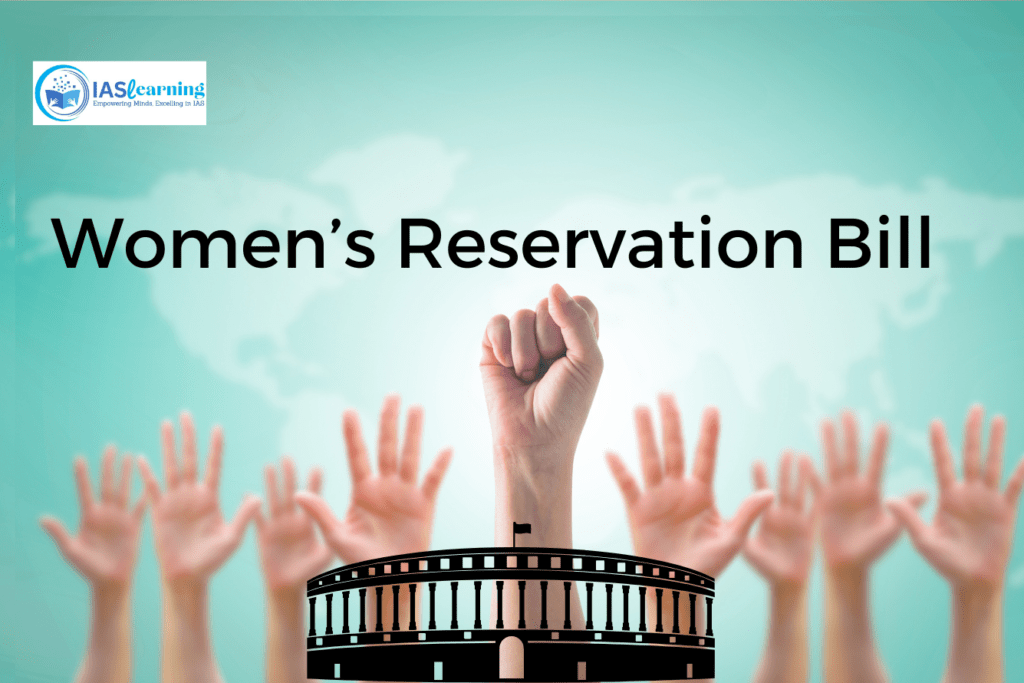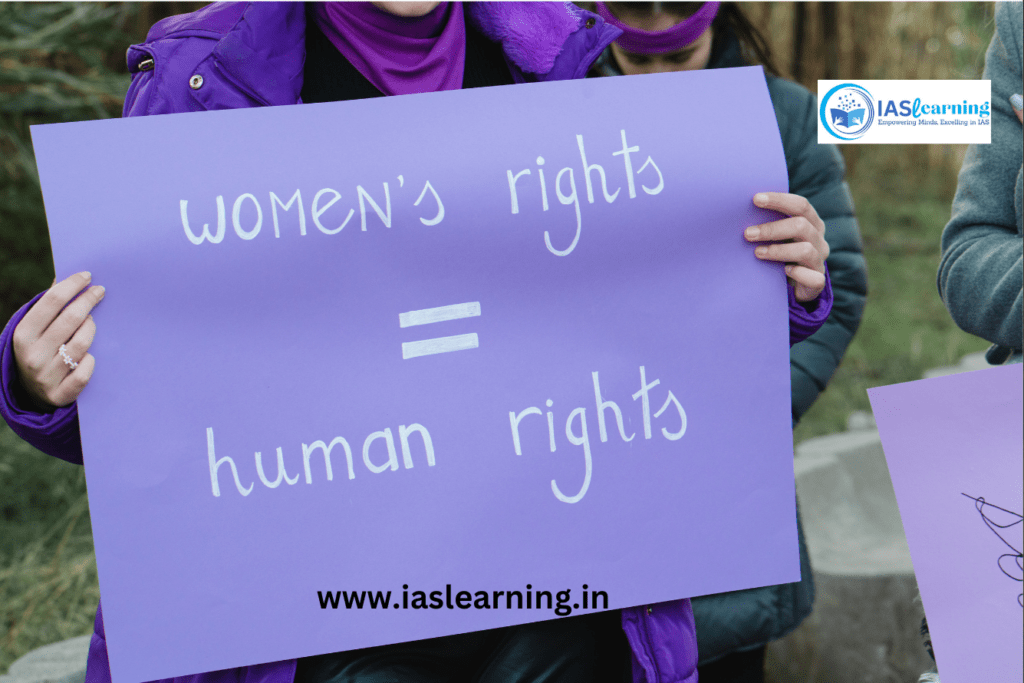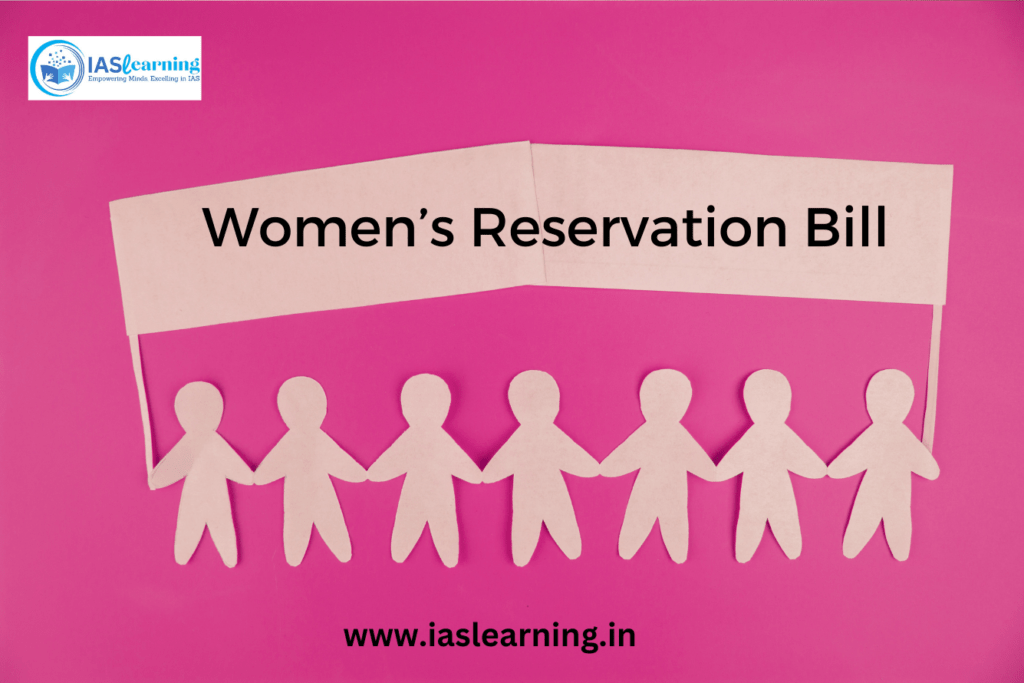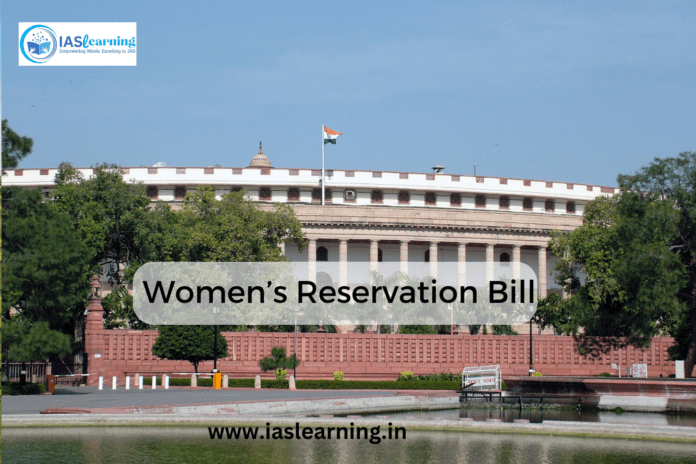Table of Contents
Introduction to Women Reservation Bill
The passage of the Women’s Reservation Bill in India on September 18, 2023, is indeed a significant milestone for gender equality and women’s political leadership in the country. This bill aims to reserve a certain percentage of seats in both the Lok Sabha (the lower house of India’s Parliament) and state legislative assemblies for women. Its primary objective is to enhance women’s representation and participation in decision-making processes at the highest levels of government.
This development underscores India’s commitment to promoting women-led development, a cause for which it garnered global support during its G20 Presidency in the same year. By taking this step, India is not only addressing gender disparities in political representation within its borders but also contributing to a broader global movement for gender parity in politics.
It’s worth noting that women’s political representation remains a challenge worldwide, with women occupying only 26.7% of parliamentary seats and 35.5% of local government positions globally. India’s decision to pass the Women’s Reservation Bill is expected to inspire and encourage similar initiatives in other countries, ultimately fostering greater gender diversity and inclusivity in political leadership on a global scale.

Highlights of the Bill
- The Constitution (One Hundred and Eighth Amendment) Bill, 2008 seeks to reserve one-third of all seats for women in the Lok Sabha and the state legislative assemblies. The allocation of reserved seats shall be determined by such authority as prescribed by Parliament.
- One third of the total number of seats reserved for Scheduled Castes and Scheduled Tribes shall be reserved for women of those groups in the Lok Sabha and the legislative assemblies.
- Reserved seats may be allotted by rotation to different constituencies in the state or union territory.
- Reservation of seats for women shall cease to exist 15 years after the commencement of this Amendment Act.
History of the Women’s Reservation Bill in India:
- Rooted in Recommendations: The bill’s origins lie in recommendations from various committees and organizations, including the National Commission for Women and the United Nations, advocating for increased women’s political participation.
- Introduction in the 1990s: The bill was first introduced in the Indian Parliament during the 1990s.
- Challenges Faced:
- Multiple Attempts: The bill has been introduced in Parliament multiple times.
- Lapses and Deferrals: It has lapsed or been deferred on several occasions due to political disagreements and resistance.
- Opposition: The bill has faced opposition from various quarters, including some political parties and lawmakers.
- Critics’ Concerns: Critics have raised concerns about:
- Implementation: Doubts about the practical implementation of the bill.
- Impact on Marginalized Groups: Concerns about potential effects on other marginalized groups.
- Scope of Empowerment: Questions about whether it addresses broader issues of women’s empowerment beyond political representation.
- Supporters: The bill has received support from:
- Women’s Rights Activists
- Civil Society Organizations
- Women Politicians
- Rationale for Support: Supporters argue that the bill is necessary to:
- Break Gender Barriers: Dismantle gender barriers in Indian politics.
- Gender Disparity: Address gender disparities in political representation.
- Empower Women: Empower women to actively participate in policy formulation and decision-making.
- Toward Gender Equality: The Women’s Reservation Bill is seen as a significant step toward achieving gender equality in politics.
- State-Level Initiatives: Some Indian states have taken independent measures to increase women’s representation in local governance, such as implementing quota systems to reserve seats for women in panchayats (local self-government bodies).

Women’s Reservation Bill, 2023:
- Reservation Percentage: The proposed bill calls for the reservation of one-third (33.33%) of the total seats in the Lok Sabha and state legislative assemblies for women.
- Mandates:
- 33% Reservation: It mandates a 33 percent reservation for women in the Lok Sabha, state Legislative Assemblies, and the Delhi Assembly.
- Within SC and ST Reservations: It also reserves one-third of seats for women within the existing SC (Scheduled Castes) and ST (Scheduled Tribes) reservations.
- Rotational Basis: Seats will be reserved on a rotational basis.
- Limited Duration: Reservations will cease after 15 years.
Criticisms of the Bill:
- Complex Implementation Schedule: Critics point out the complexity of the bill’s implementation schedule. It states that the bill would go into effect once “an exercise of delimitation is undertaken for this purpose after the relevant figures for the first Census taken after that date have been published.” However, the specific election cycle from which women will get their fair share is not specified.
- Exclusion of Rajya Sabha and State Legislative Councils: The new bill does not offer women’s reservation in the Rajya Sabha (Upper House of Parliament) and state legislative councils, in contrast to previous regimes. This omission is seen as a limitation, as women are currently underrepresented in the Rajya Sabha compared to the Lok Sabha, and both the Lower and Upper Houses should ideally adhere to the concept of representation.
Previous Arguments Against Reservation for Women in Politics:

- Tokenism: Some argue that reservation policies can lead to tokenism, where women are perceived as filling quotas rather than being genuinely supported and empowered.
- Resistance and Backlash: There can be resistance and backlash against women in leadership roles, which may not necessarily dismantle entrenched patriarchy.
- Limited Scope: Reservation policies typically focus on political representation but may not address broader societal and cultural norms that perpetuate patriarchy.
- Intersectionality: The effectiveness of reservation policies may vary for women of different social, economic, and cultural backgrounds. Intersectionality, where multiple forms of discrimination overlap, needs to be considered.
- Addressing Systemic Issues: Reservation policies may be a starting point, but achieving lasting change in gender equality requires addressing systemic issues beyond political representation.
Significance of the Women Reservation Bill

- Gender Equality and Empowerment: The bill’s primary objective is to promote gender equality and empower women. By providing adequate political representation, it addresses a fundamental aspect of gender justice, recognizing that women make up nearly half of India’s population.
- Political Participation: The bill seeks to boost the political participation of women across all levels of government. Reserving seats for women encourages them to enter politics, run for elections, and assume public office, thus strengthening their presence in the political sphere.
- Women’s Voices and Issues: Increased representation of women in legislatures ensures that women’s voices are heard on critical issues, including those related to women’s rights, education, health, and safety. This can lead to the formulation of policies and legislation that address gender-based discrimination and violence.
- Role Models: Women elected to political office can serve as role models for other women and girls, inspiring them to pursue leadership roles in various fields, including politics.
- Tackling Patriarchy: The reservation of seats for women challenges traditional gender roles and stereotypes, thereby challenging the patriarchal nature of Indian politics and society.
- Gender Inclusive Governance: Research indicates that gender diversity in decision-making bodies, including legislatures, often results in better governance and decision-making. Diverse perspectives and experiences are considered, leading to more inclusive policies and solutions.
- Social and Economic Development: Empowering women politically can have positive effects on social and economic development. It can lead to policies that promote gender-sensitive development, improved access to education and healthcare for women, and increased economic opportunities.
- Addressing Gender Disparities: The bill can contribute to reducing gender disparities in various sectors, including education, employment, and healthcare, as women’s concerns and priorities are more likely to be addressed through their representation in politics.
- International Commitments: India is a signatory to international agreements and conventions that emphasize gender equality and women’s empowerment. Implementing the Women’s Reservation Bill demonstrates India’s commitment to fulfilling these international obligations.
- Inclusive Political Landscape: The bill encourages political parties to actively promote women leaders and provide them with opportunities to contest elections. This can result in a more inclusive and diverse political landscape, with a broader range of voices and perspectives.

Conclusion
United Nations recognizes the significance of the Women’s Reservation Bill in India as a significant step towards gender equality and women’s empowerment. By reserving 33% of seats for women in the national Parliament, India joins the ranks of 64 countries worldwide that have taken similar measures to promote women’s political participation.
The UN underscores that achieving a critical mass of 30 percent representation by women in Parliament is known to yield positive outcomes for women’s empowerment. However, the hope is that the implementation of such reservations will ultimately pave the way for achieving even higher representation, aiming for the goal of 50 percent representation of women in Parliaments across the globe.
This move not only sets a powerful example for other countries but also demonstrates India’s commitment to promoting gender equality and ensuring that women have a stronger voice in shaping the nation’s policies and future.

Frequently Asked Questions (FAQs) on Women Reservation Bill:
- What is the Women Reservation Bill in India?
- The Women Reservation Bill is a proposed legislation that seeks to reserve a certain percentage of seats in the Indian Parliament and state legislative assemblies for women.
- What is the main objective of the Women Reservation Bill?
- The primary aim of the bill is to enhance women’s political representation and participation in decision-making processes at the highest levels of government.
- What percentage of seats does the Women Reservation Bill propose to reserve for women?
- The bill calls for the reservation of one-third (33.33%) of the total seats in the Lok Sabha, state Legislative Assemblies, and the Delhi Assembly for women.
- How will the reservations be implemented under the Women Reservation Bill?
- The bill proposes to reserve seats on a rotational basis, and these reservations will cease after 15 years.
- What are the criticisms and challenges associated with the Women Reservation Bill?
- Some criticisms include the complexity of the implementation schedule, concerns about potential tokenism, resistance to women in leadership roles, and the bill’s limited scope.
- Has the Women Reservation Bill been passed into law in India?
- As of the last available information (September 2021), the bill had not been passed into law, despite multiple attempts in the Indian Parliament.
- Are there any state-level initiatives in India to increase women’s political representation?
- Yes, some Indian states have taken independent measures to enhance women’s representation in local governance, such as implementing quota systems to reserve seats for women in panchayats (local self-government bodies).
- How does the Women Reservation Bill contribute to gender equality in India?
- The bill aims to address gender disparities in political representation, empower women to actively participate in policy formulation, and challenge traditional gender roles and stereotypes.
- What is the global significance of India passing the Women Reservation Bill?
- India’s passage of the bill can inspire similar initiatives worldwide, contributing to the global movement for gender parity in politics.
- What are the potential benefits of increased women’s representation in politics?
- Benefits include better governance, policies that address gender-based discrimination and violence, and the empowerment of women in various sectors, ultimately leading to social and economic development.

